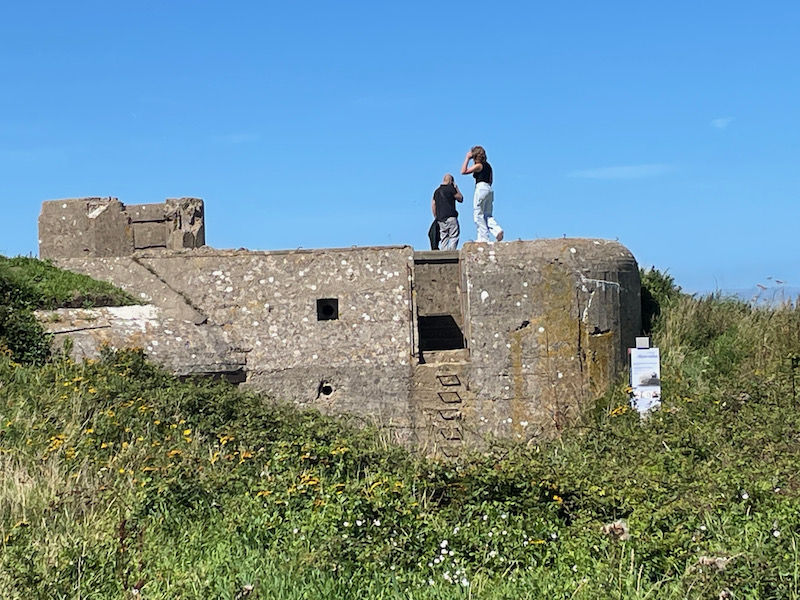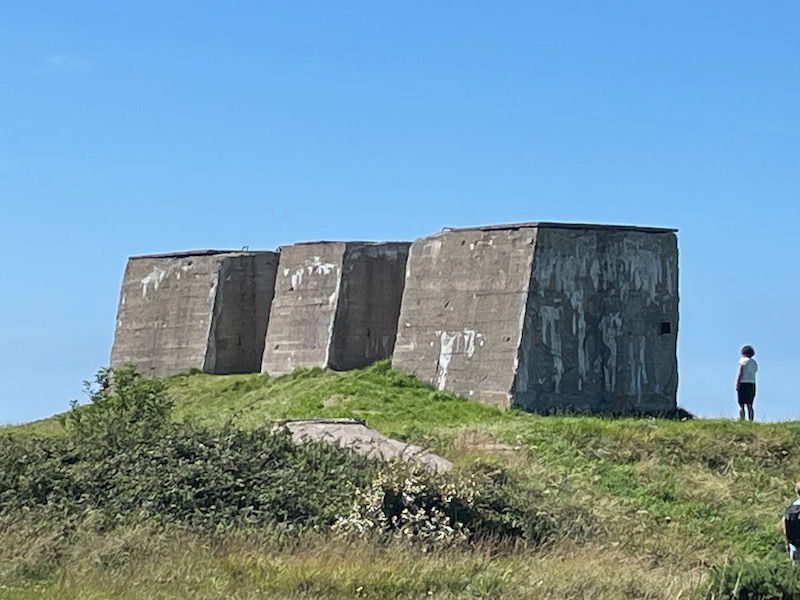Our Blog - Normandy 2023 - Fecamp, France
On the Alabaster Coast (the stretch on the English Channel that has high chalk cliffs) is the town of Fecamp. One legend of the founding of the city states that the trunk of a fig tree (ficus) carrying the Precious Blood of Christ washed ashore on the riverbank at Fécamp in the 1st century. Immediately, a fountain of holy blood gushed from the site, attracted many medieval pilgrims and enhancing the reputation of the city. There was definitely a town here during the Gallo-Roman period since several objects have been found dating back to that time. The history of Fécamp has always revolved around the fishing industry and its harbor (first mentioned in the 11th century). The reputation of the salt-herrings of Fécamp was established as early as the 10th century, that of smoked herrings from the 13th century.
A bit of trivia, the offshore wind farm at Fecamp, the first of its kind in France, is in process of completion. The first of the 71 planned wind turbines was installed in July of this year and the rest will gradually be installed between 8 and 15 miles offshore. When completed, they should be able to supply energy to 770,000 people, or 60% of the population of the Seine-Maritime department.
We had lunch (at a crêperie of course!) and headed to the Église Saint-Étienne. Overlooking the harbor, the church presents a mix of styles, Renaissance and neo-Gothic. The building dates back to the 16th century, built on the site of an earlier Romanesque church that had become too small. At the end of the 19th century, shipowners and sailors from Fécamp wished to enlarge the building and so the aisles were widened and the flamboyant neo-Gothic bell tower was added. The tympanum of the Renaissance portal represents the Stoning of Saint Stephen although it is difficult to get a good view because it has been badly damaged by the wear and tear of time.
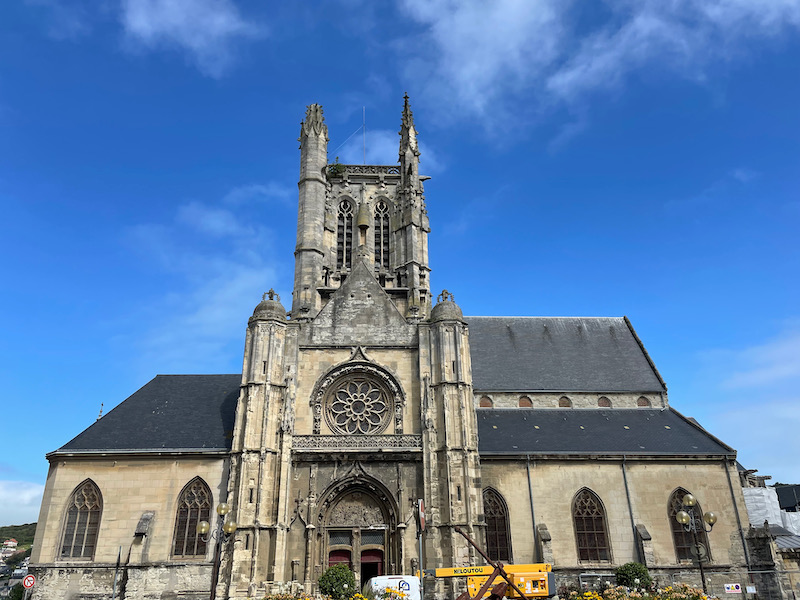
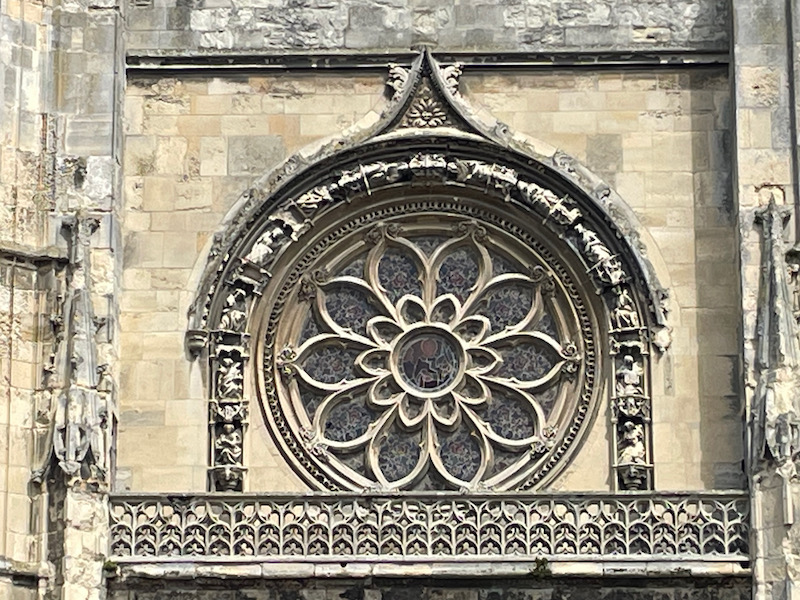
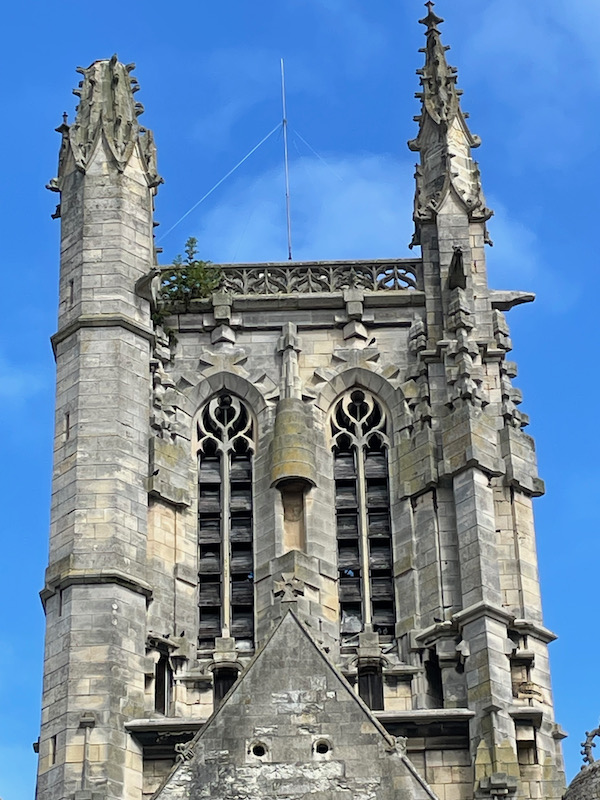
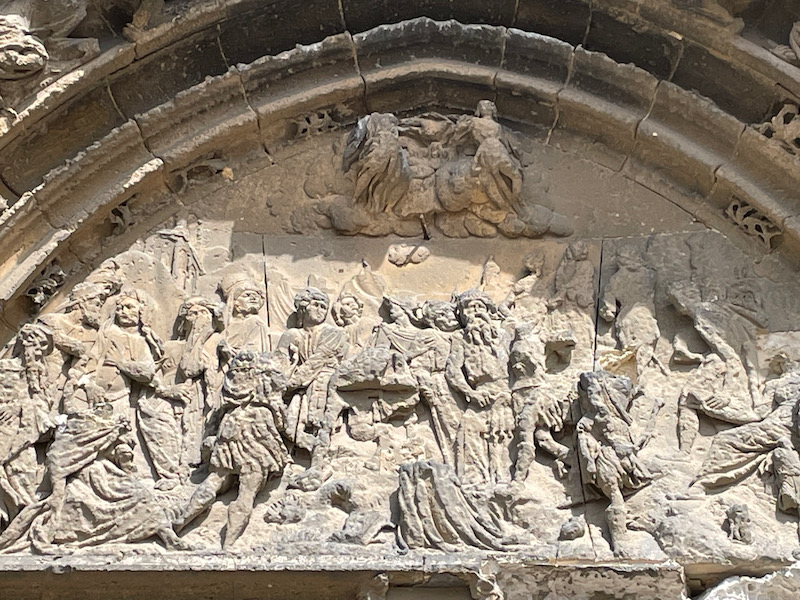
Here you can see the nave and the two aisles. There was a bit of work going on in the church, so several areas were blocked off. The paintings (that you will see next) were part of a restoration project from 2011-2013, which included adding nice panels with explanations for all of the paintings.
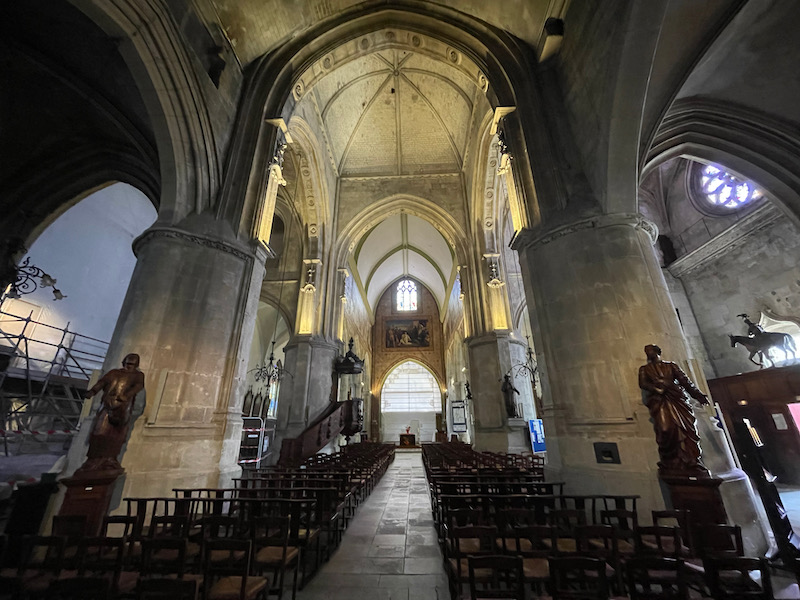
Probably the most impressive part of the church are the monumental paintings in the choir that date back to the 19th century. Here is a view of one side of the choir, where you can see the 3 large paintings over the arches (there are 3 more on the other side). I took a couple close-ups of 2 of them.
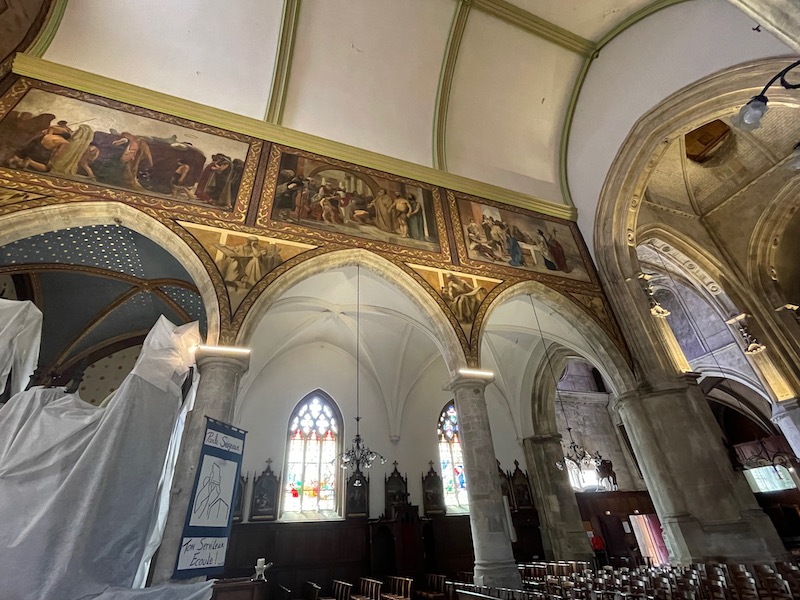
The first one is entitled "Leo the Great wards of Attila", painted in 1895. It shows the delegation of Pope Leo I (on the left) stopping the army of Attila the Hun (on the right) at the Meeting at Mantua in 452 AD.
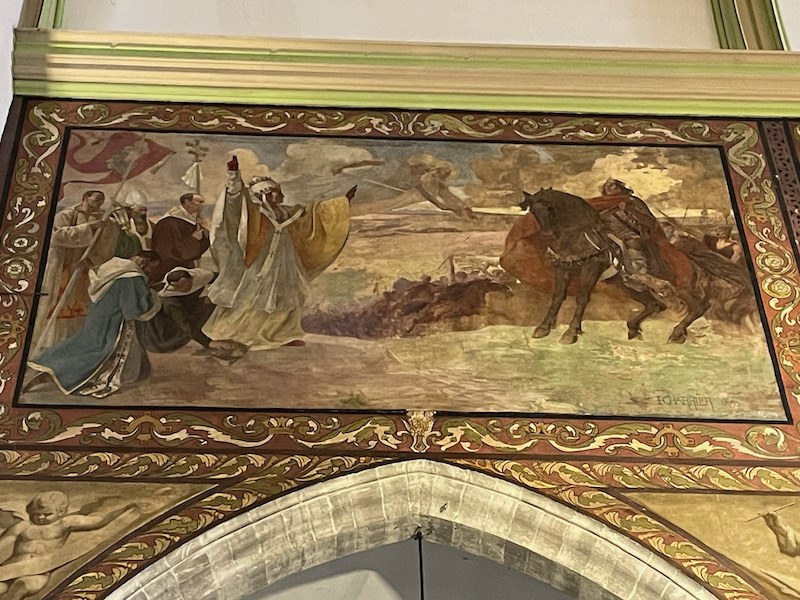
This one is "Entry of Jesus into Jerusalem", painted in 1893. It shows Jesus entering Jerusalem on a donkey for Passover. A large crowd has gathered to welcome him.
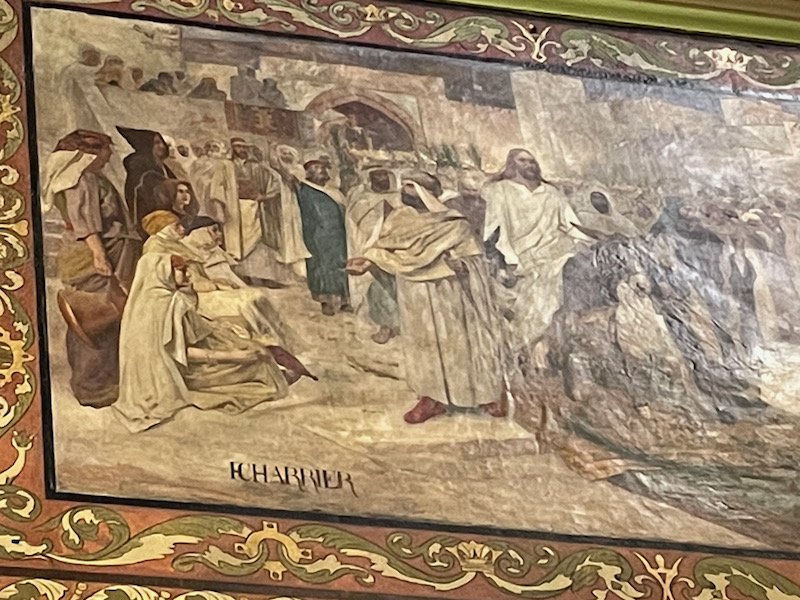
At the ends of the side aisles are small chapels, colorfully painted (including the ceiling) and with really nice altarpieces.
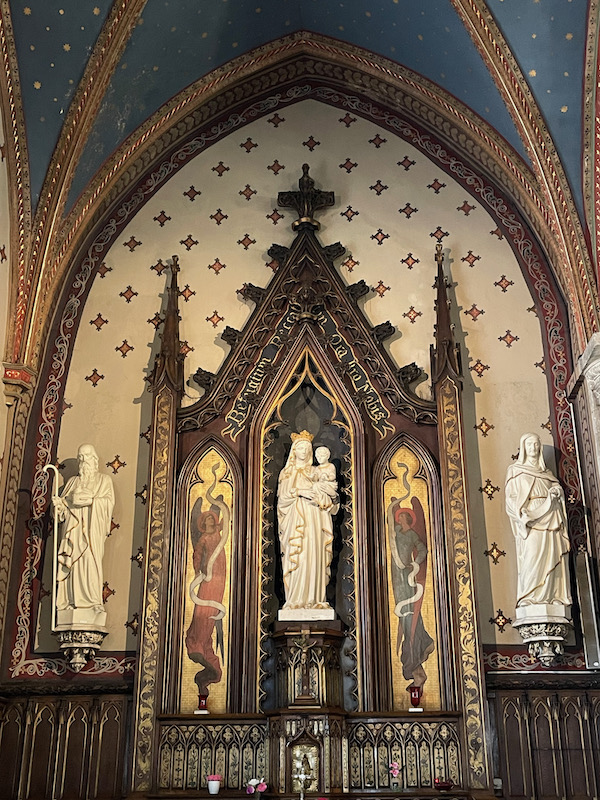
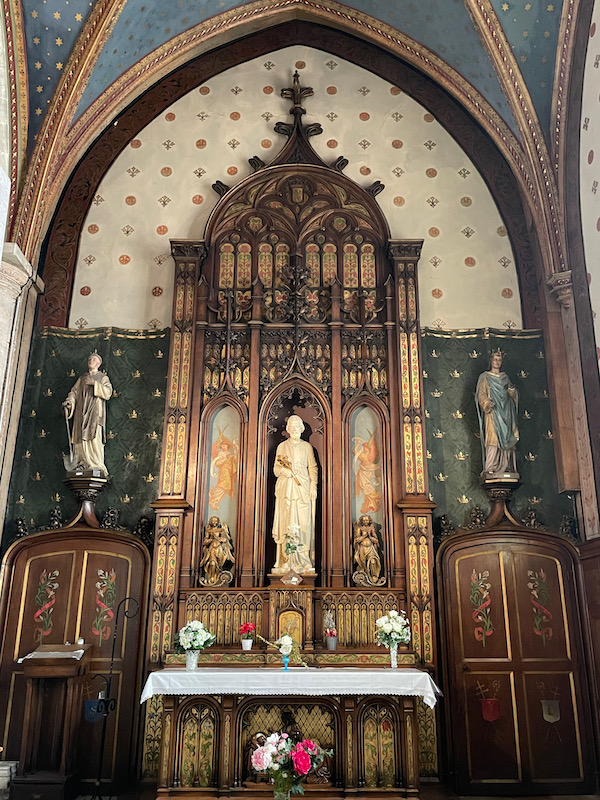
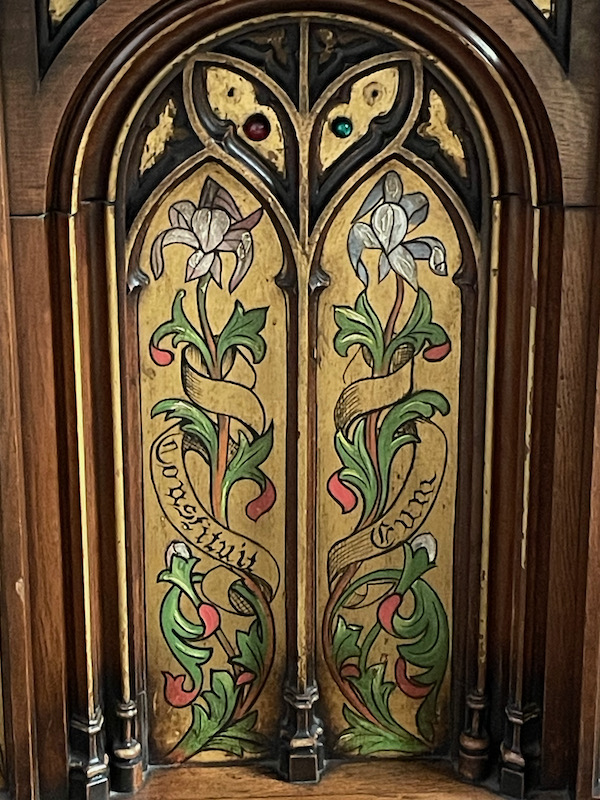
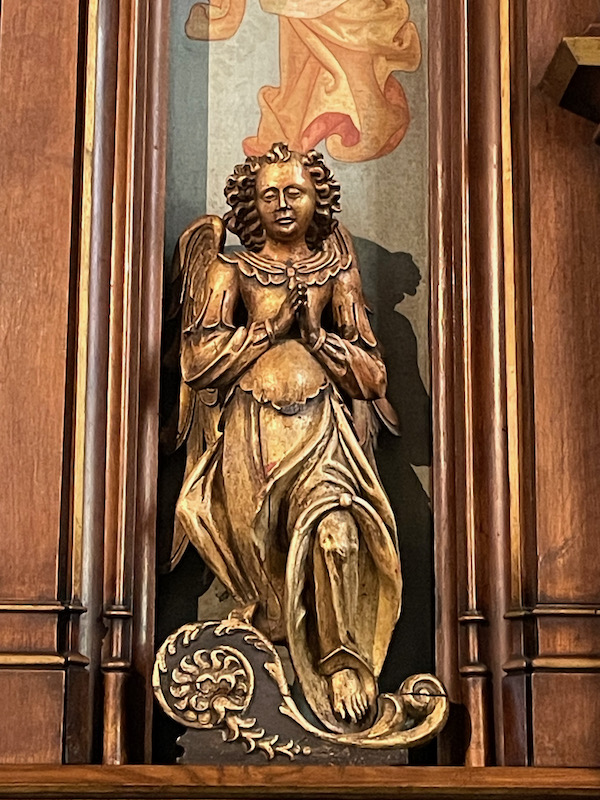
Some of the stained-glass windows date from 1882 while some are from the early 20th century. This first window is entitled "Saint Elizabeth of Hungary distributes food to the poor" and the 2nd is entitled "The Holy Family", done by an artist from Rouen in 1908.
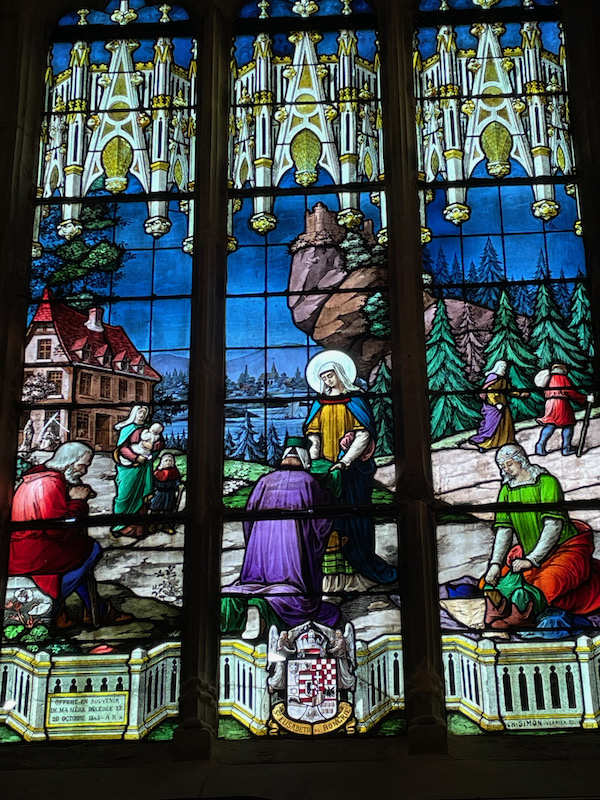
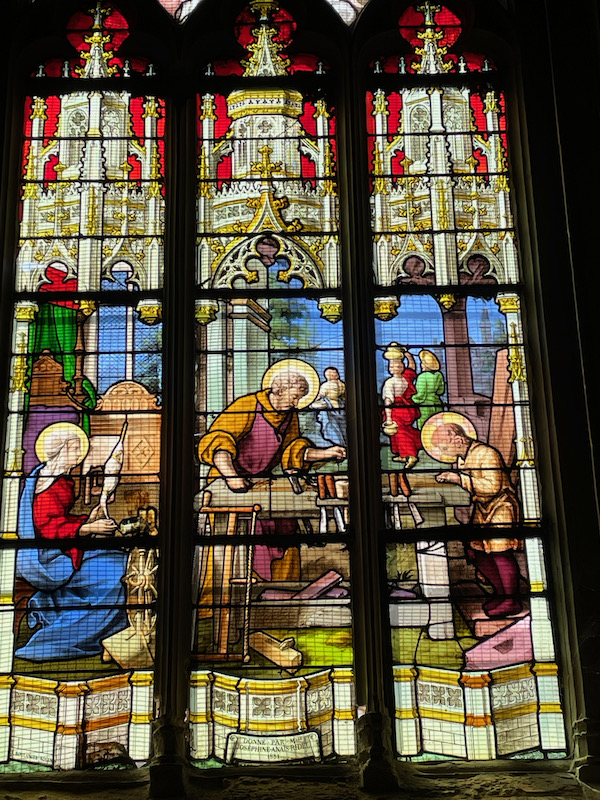
This equestrian statue of Saint Martin is from the 17th century and sits over one of the entrances.

This is one of the more unique monuments to the dead, consisting of a carved wooden altar with a skull-and-crossbones on the bottom.
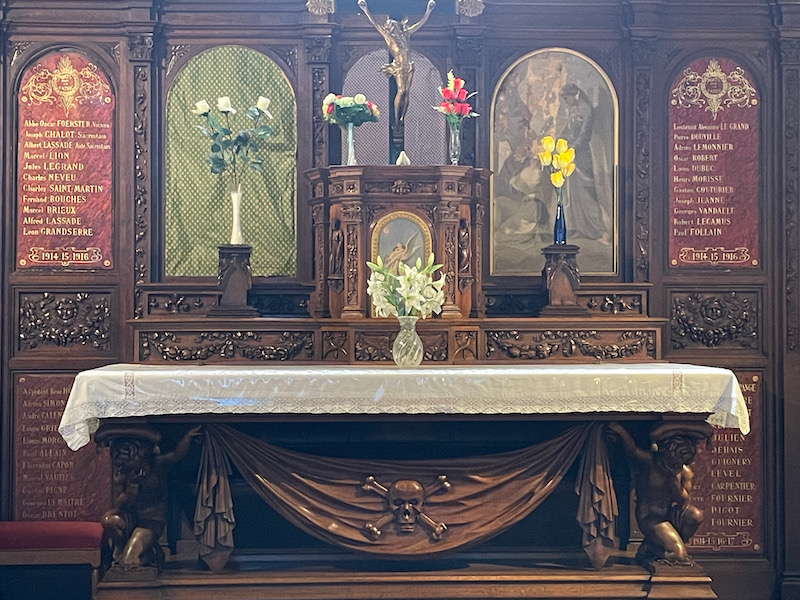
Probably the most impressive building in the entire city is this one, the Benedictine Palace. It was built at the end of the 19th century in neo-Gothic and neo-Renaissance styles. And if you are thinking this was built by royalty of some kind ... nope, you would be wrong. It was built for Alexandre Le Grand ., who was a liquor maker, specifically of the liquor called "Bénédictine". According to house legend, it was originally created as an "elixir of health" by a Venetian monk at the nearby Abbey of Fecamp in 1510. Then it was "lost" and "rediscovered" by Alexandre Le Grand in 1863. About 75% of production is exported with like 45% of it going to the US. It is a digestif (40% alcohol) that is made up of a secret recipe of 27 different plants, herbs, and spices. In addition to a boutique and bar, there is an art museum, a "spice room", the distillery and cellars where ALL of the Bénédictine is produced and stored (bottling no longer takes place here).
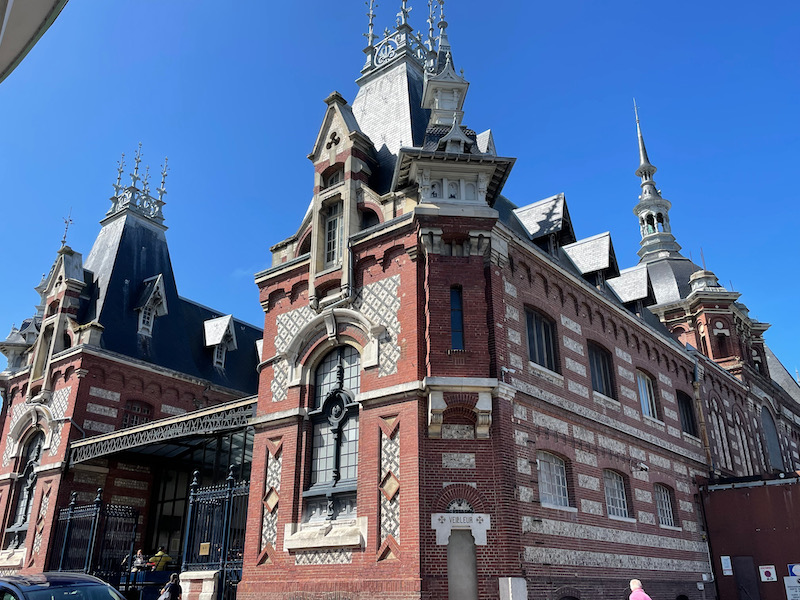
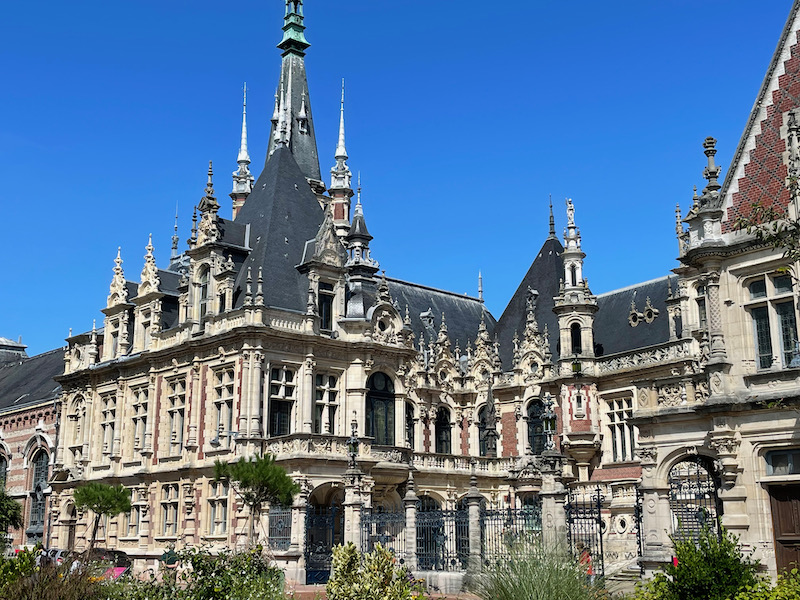
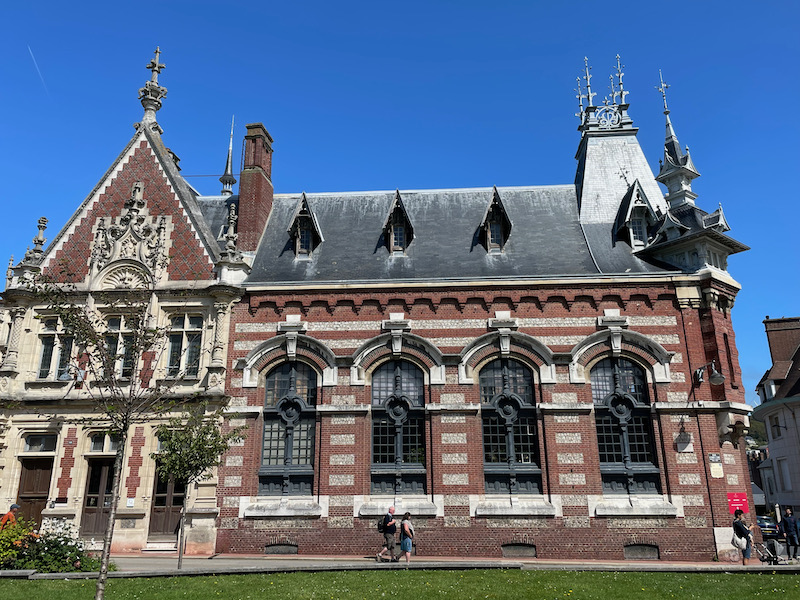
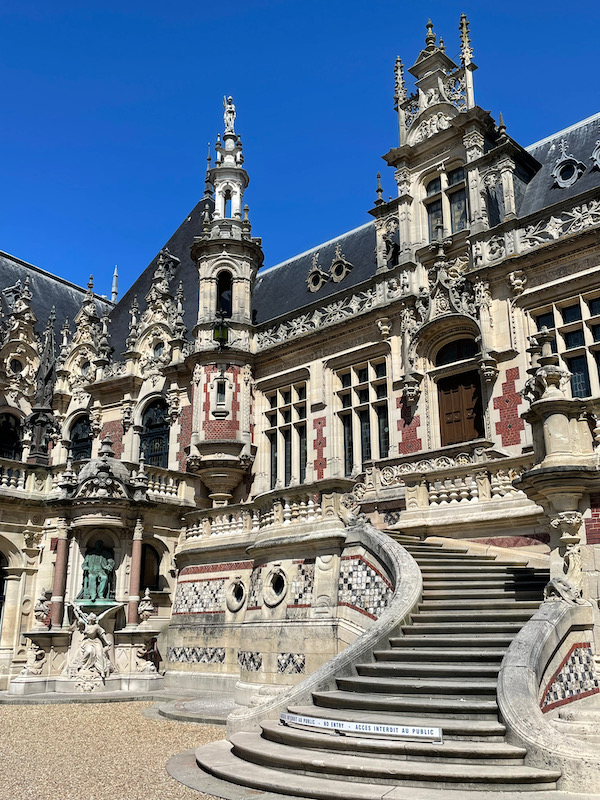
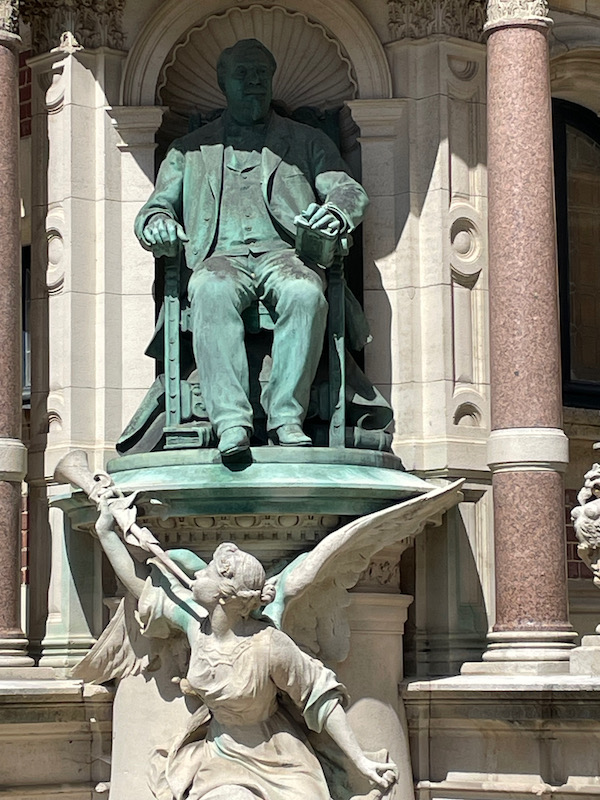
Just across the street is a copper distillation pot like the ones that are still used in the process.
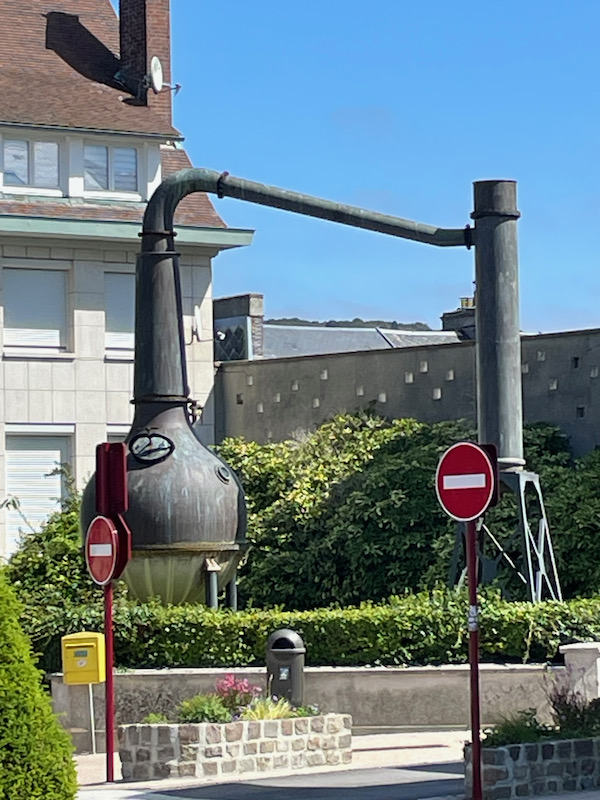
The Villa Emilie is an example of the Art Nouveau movement, build in 1907. Above the stone doors and windows have carved floral-inspired motifs, enhanced with glazed brick decorations.
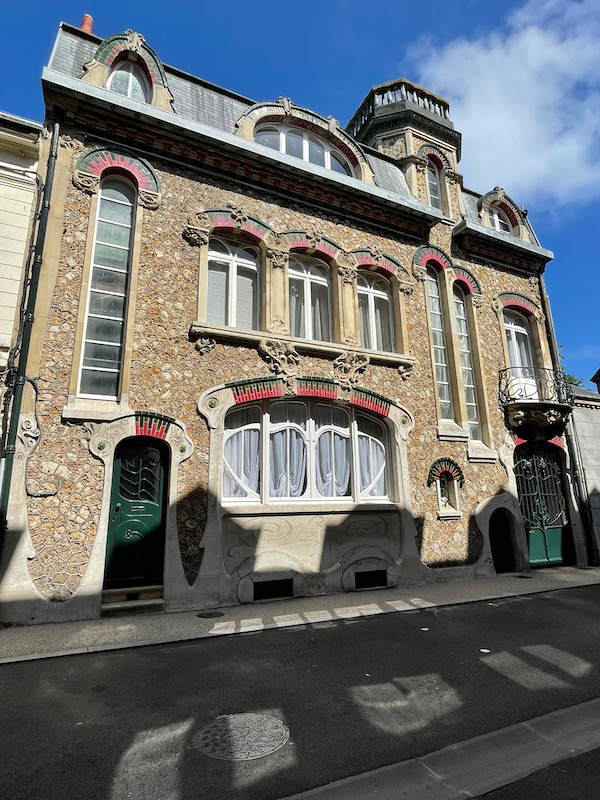
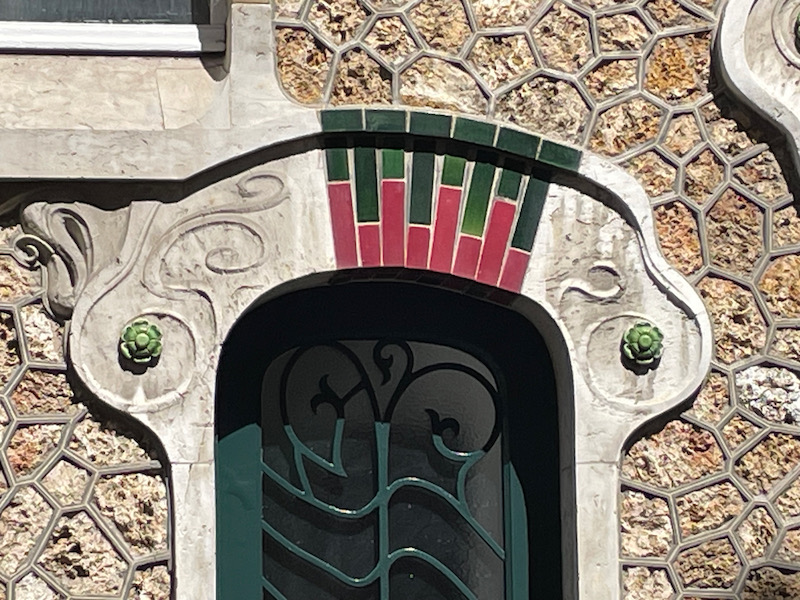
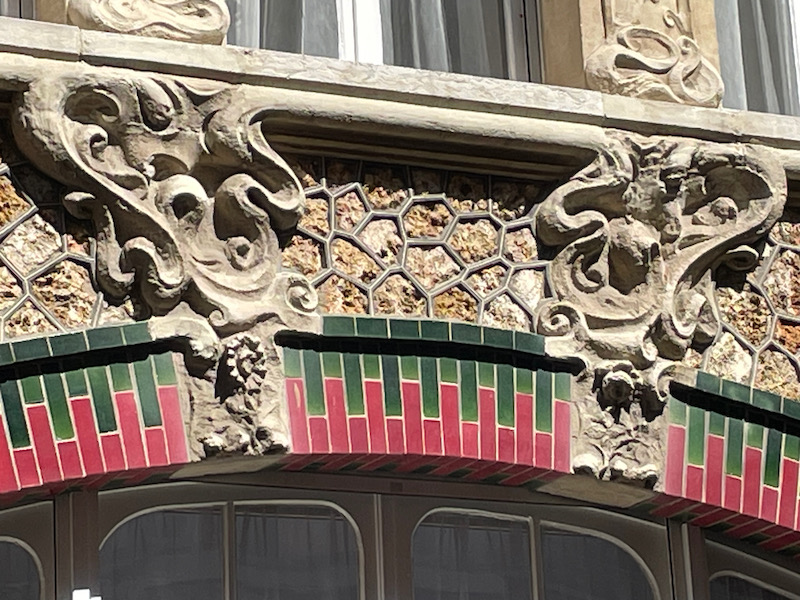
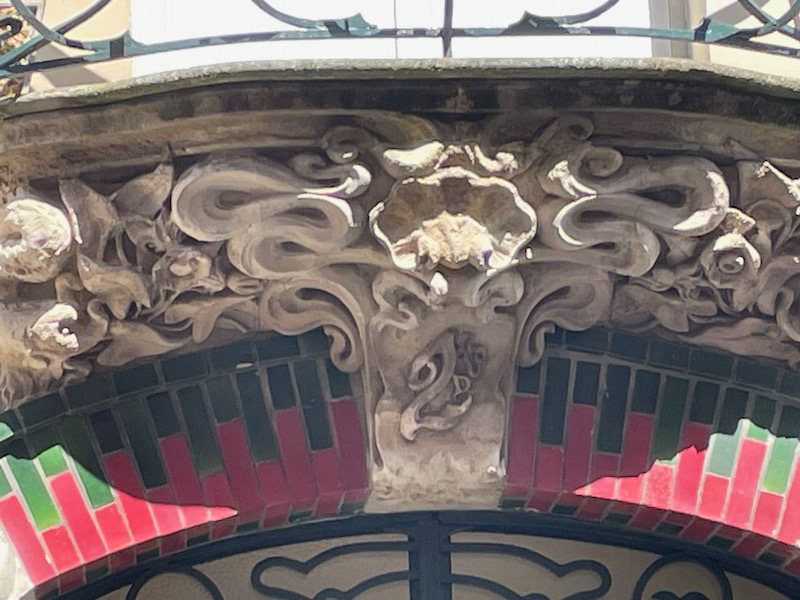
The Abbey of the Trinity was a Benedictine abbey built within the walls of the castle of the Dukes of Normandy. The abbey church is mostly Gothic, although there are some Romanesque parts as well as an Italian Renaissance façade. It is actually really long, 127 meters (416 feet), which is larger than many cathedrals. The oldest sections date to around 990, with other additions in the 11th, 12th, and 13th centuries. The door in the classical-style front is framed by monumental statues of 2 of the Dukes of Normandy: Richard I and Richard II, the two benefactors of the abbey who rest in the abbey.
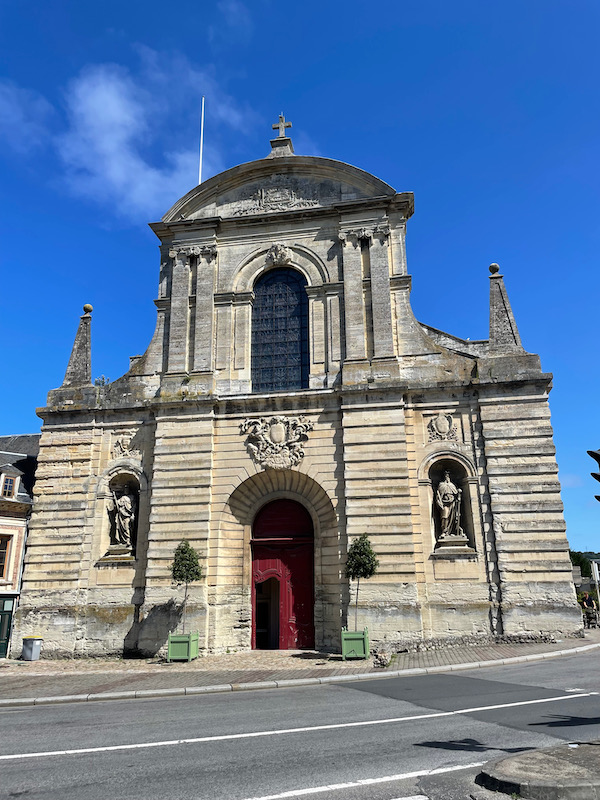
Here you can see the very long nave with the Gothic arches separating it from the side aisles. The nave has 3 levels: the Gothic arcades, then over each arch are twin Gothic bays with a median column pierced with quatrefoils with flowered cusps along the gallery, then at the top, high windows (that you don't really see here). While most of the church is now white, here and there, you see a bit of the original colors.
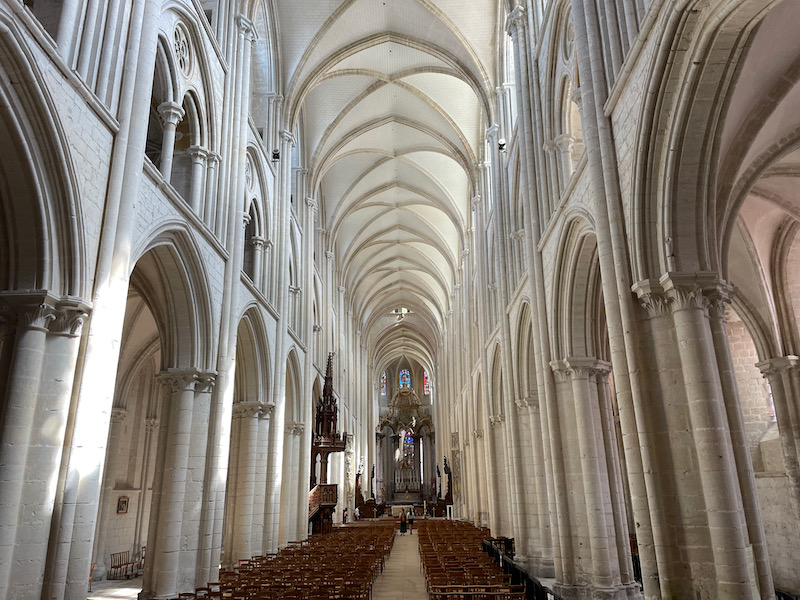
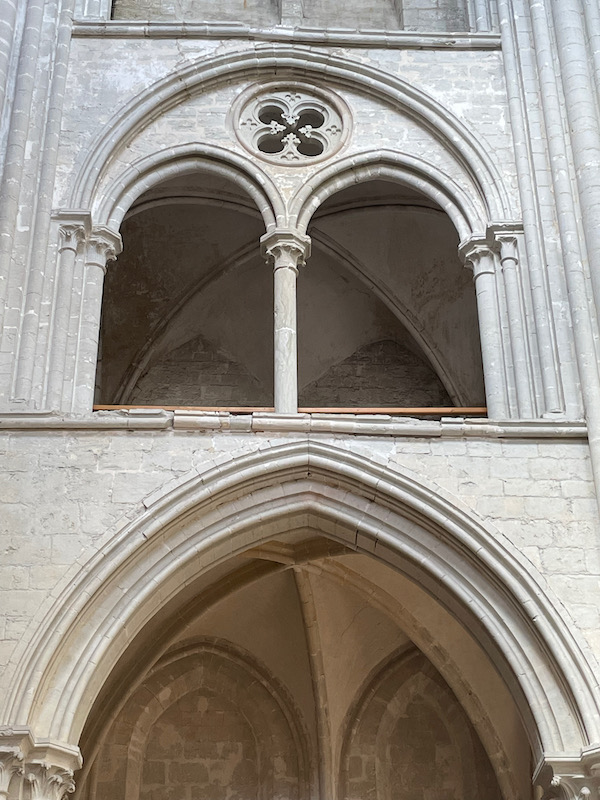
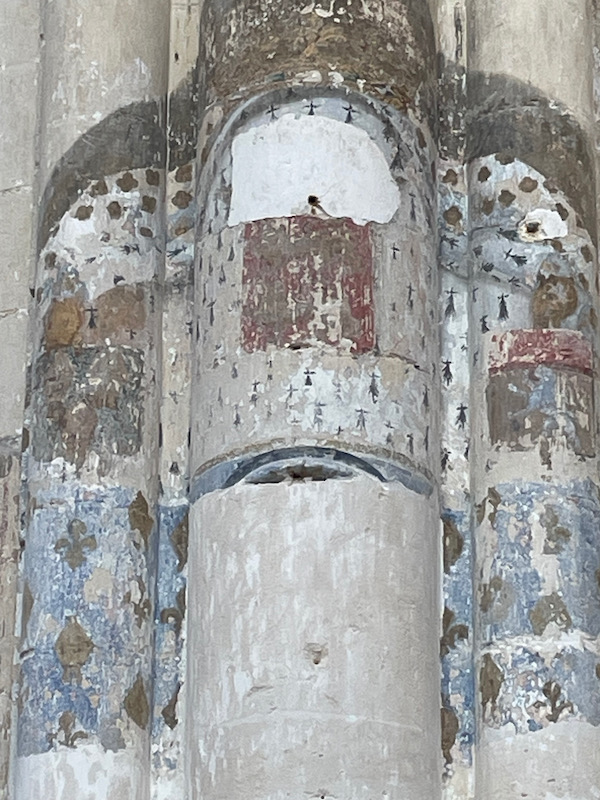
There is a carved wooden preaching pulpit, which is quite impressive, in a Flamboyant Gothic style.
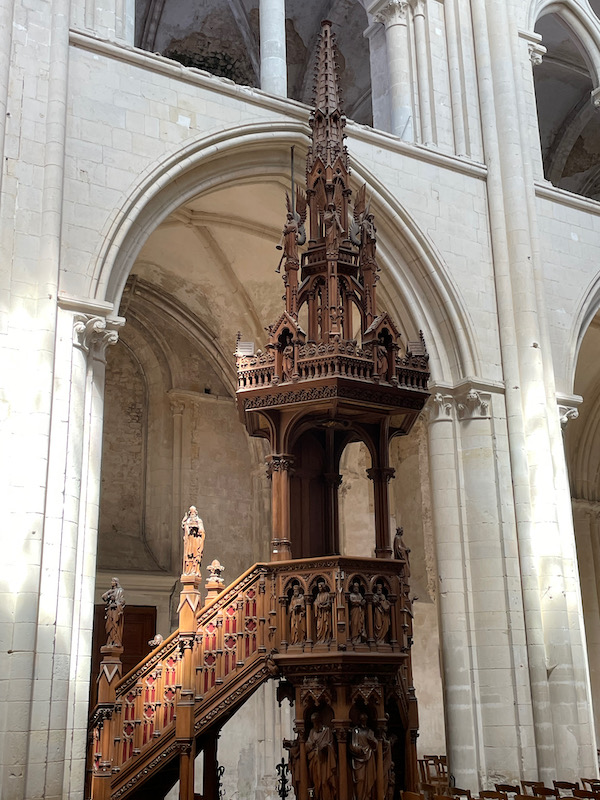
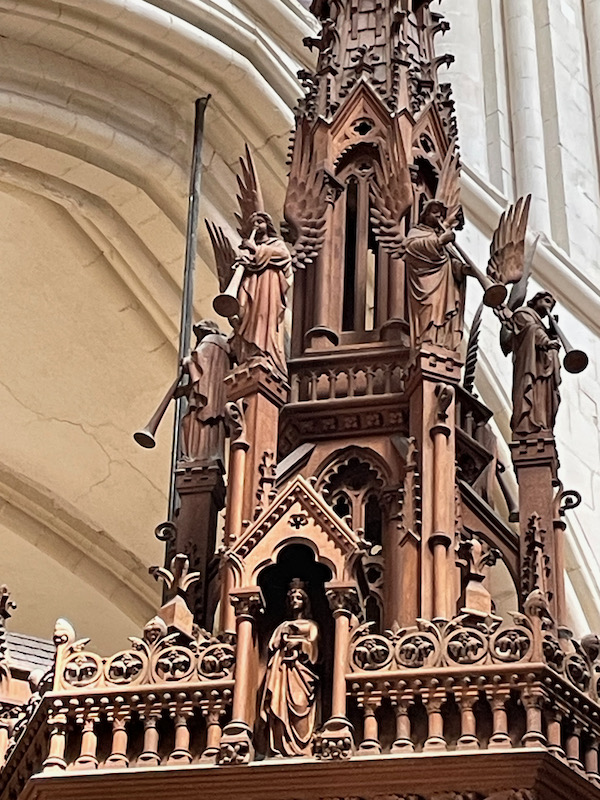
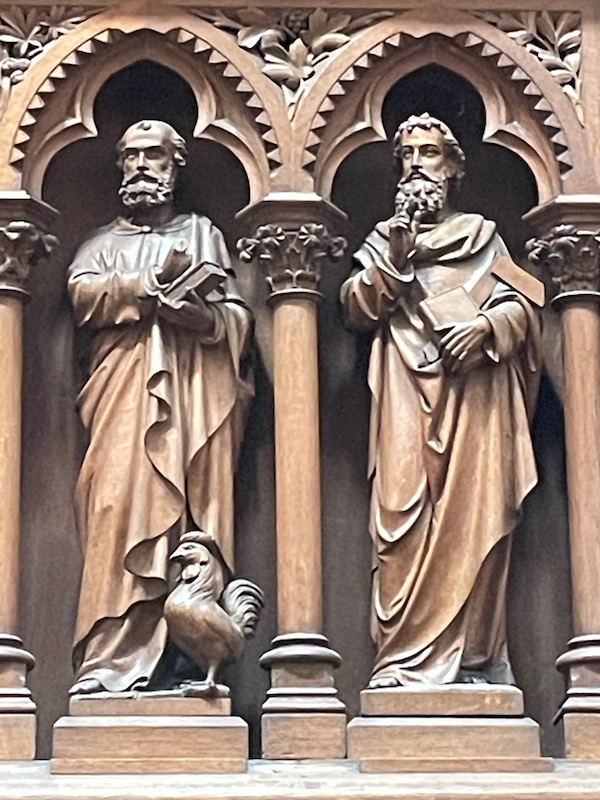
The Chapel of the Calvaire was interesting for me in that the background is just painted onto the stone. I don't know what the bas-relief to the left of it shows, but it also was quite impressive.
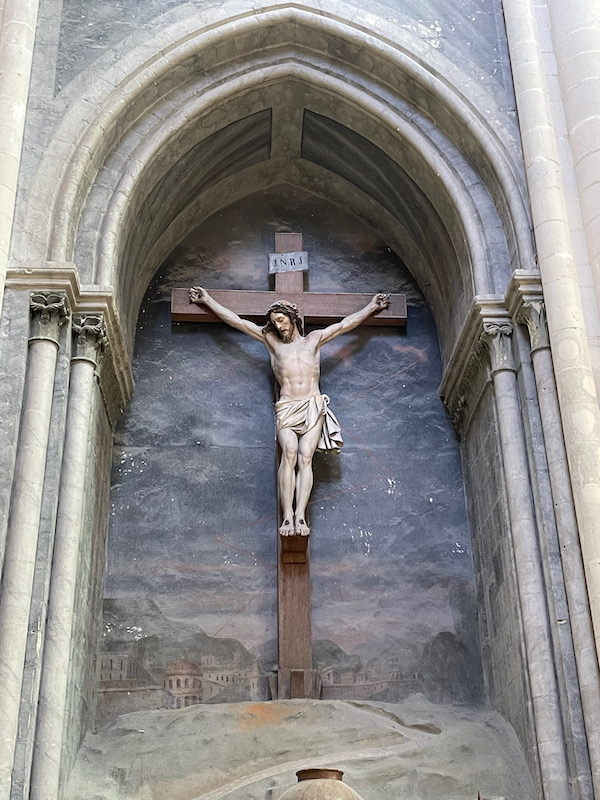
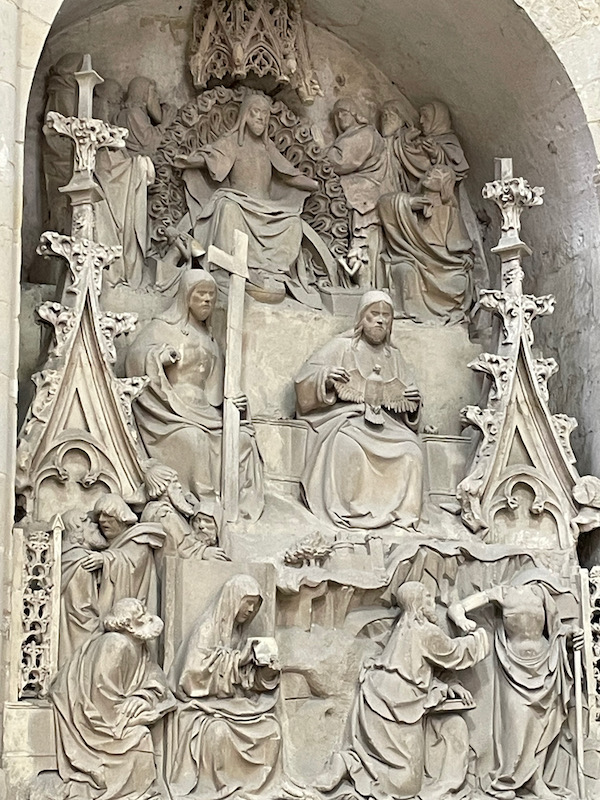
The main altar has a huge canopy over it, which dates from the 18th century.
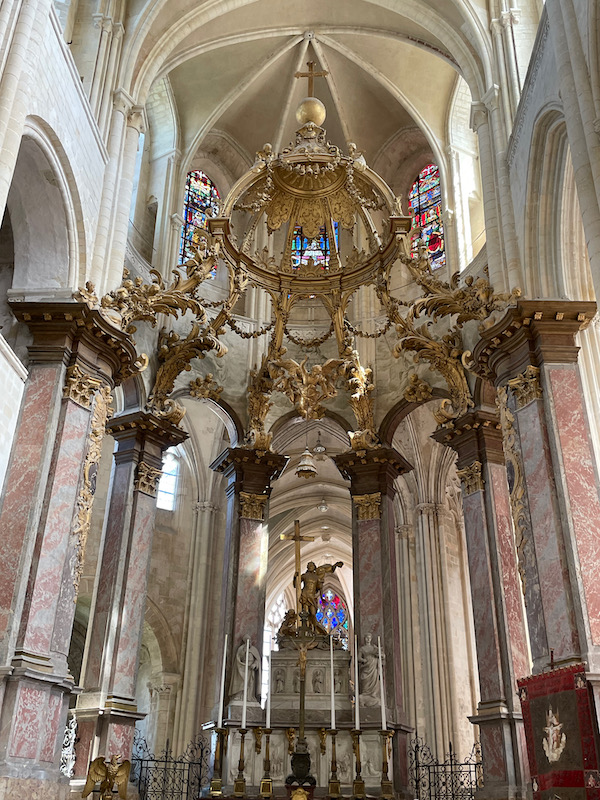
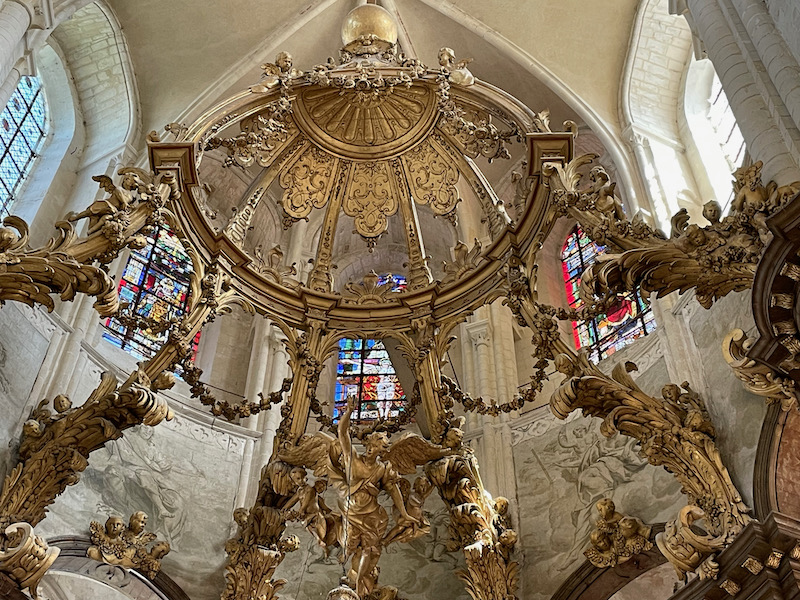
In the north transept is an astronomical clock, built in 1667 by a clockmaker from Rouen. It indicates in particular the amplitude of the tides and the phases of the Moon.
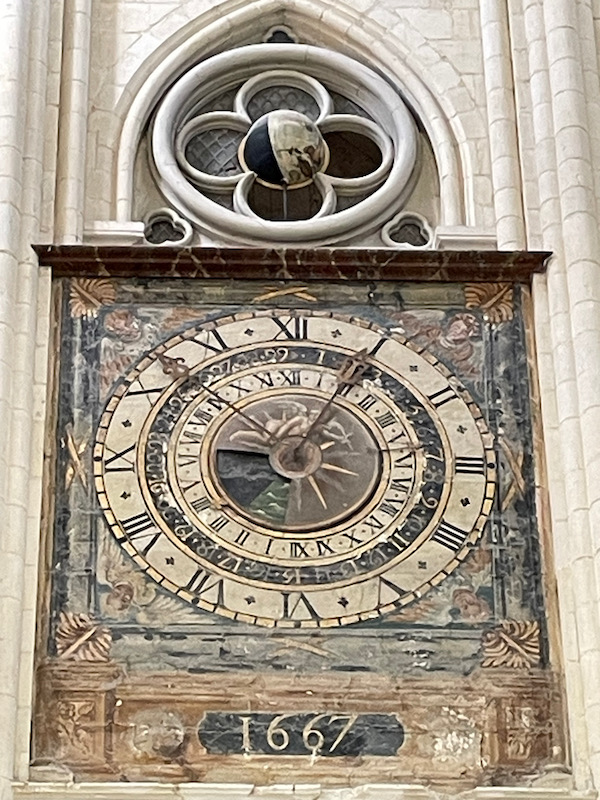
In the southern arm of the transept is a bas-relief known as the Dormition of the Virgin from the 15th century.
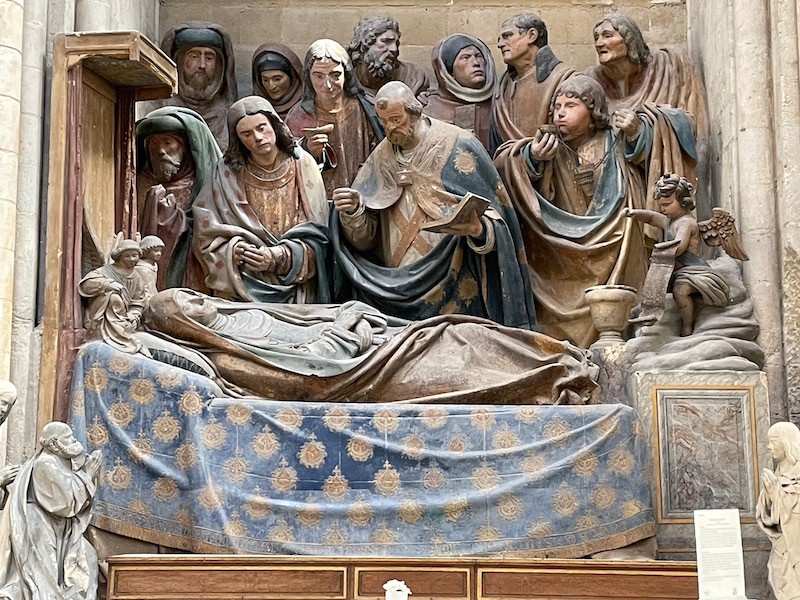
I'm not quite sure how to explain this ... it looks like it should be a stained-glass window, but it isn't glass. You can see the normal tracery around where the glass would normally be, but then it is closed up and painted.
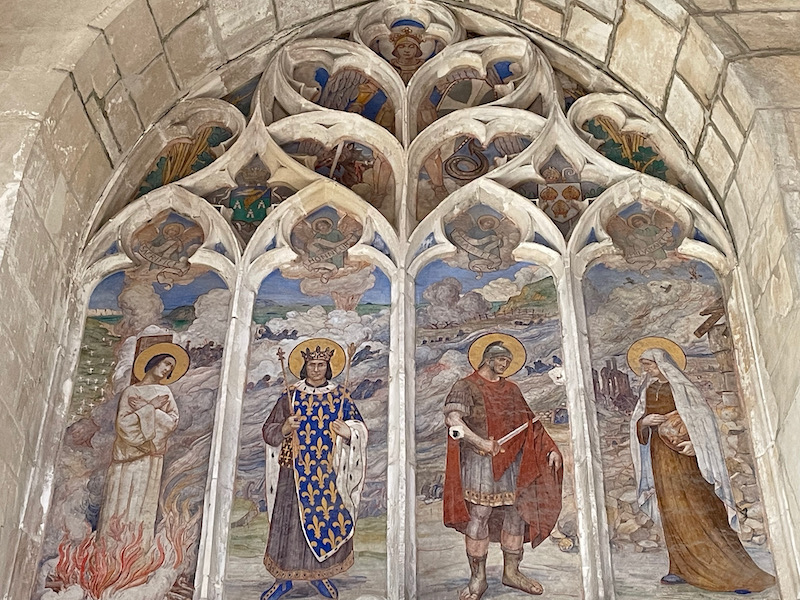
Across from the Abbey church are the ruins of the Ducal Palace, the Château de Fécamp. The first palace was a simple wooden building built in the 10th century. It was replaced by a stone palace by Richard II, Duke of Normandy and in 1067, William the Conquerer celebrated his victory at Hastings here, but then moved his base to Caen. At the end of the 12th century, Henri II Plantegenet built an enormous fortified bastion here.
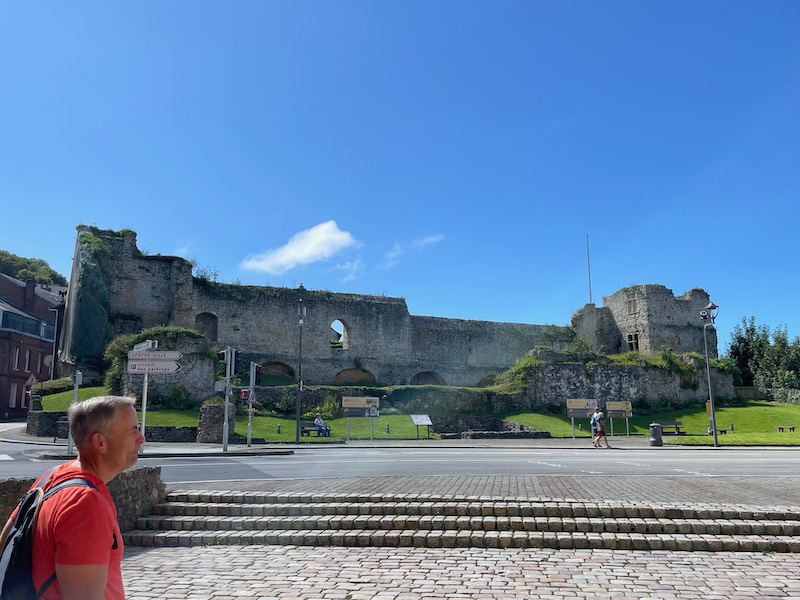
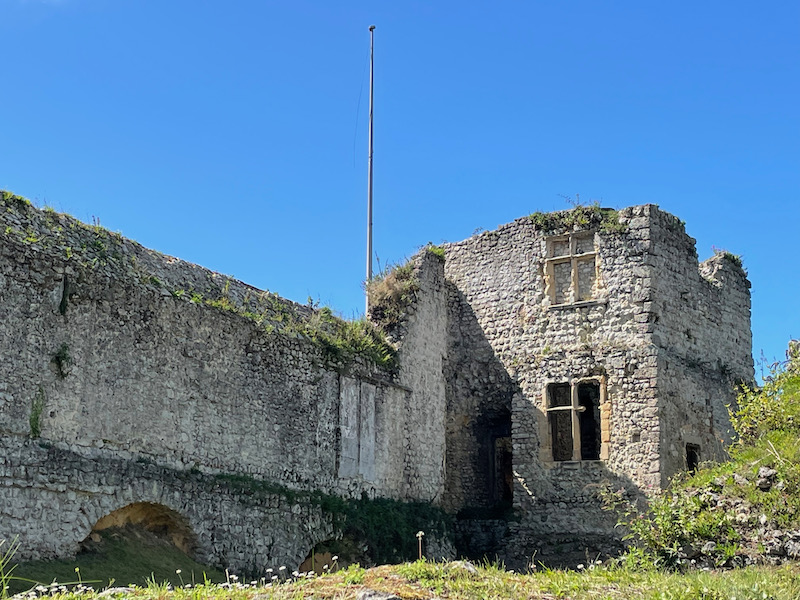
More views of the cliffs along the Alabaster coast from the Cap Fagnet, which is the highest point of the Alabaster Coast, and of Fecamp and the port below.
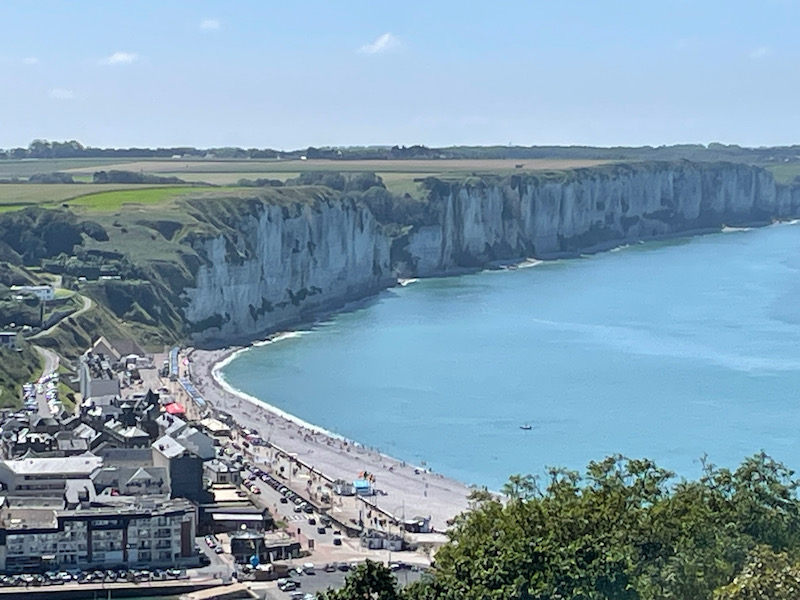
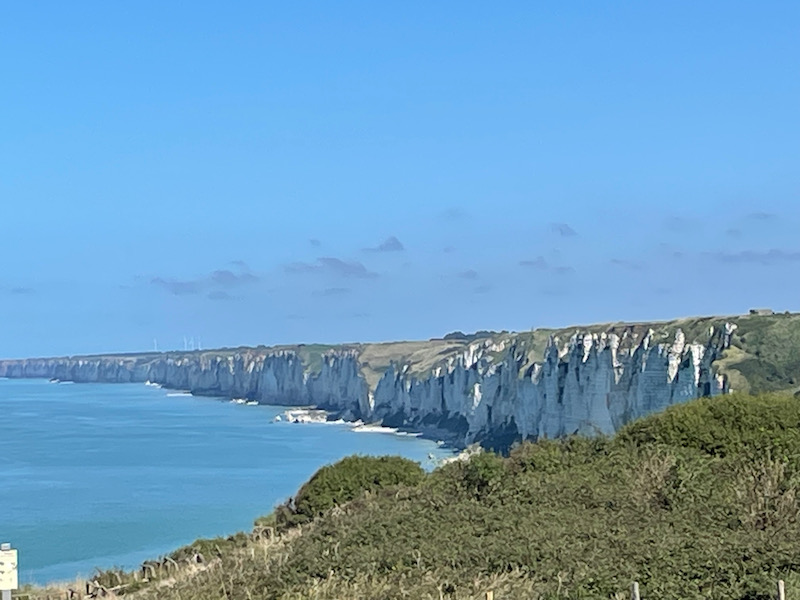
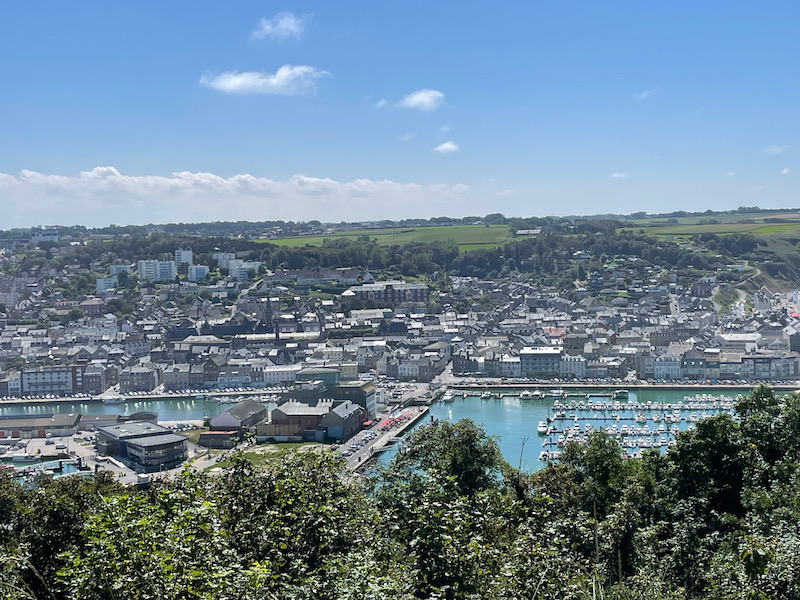
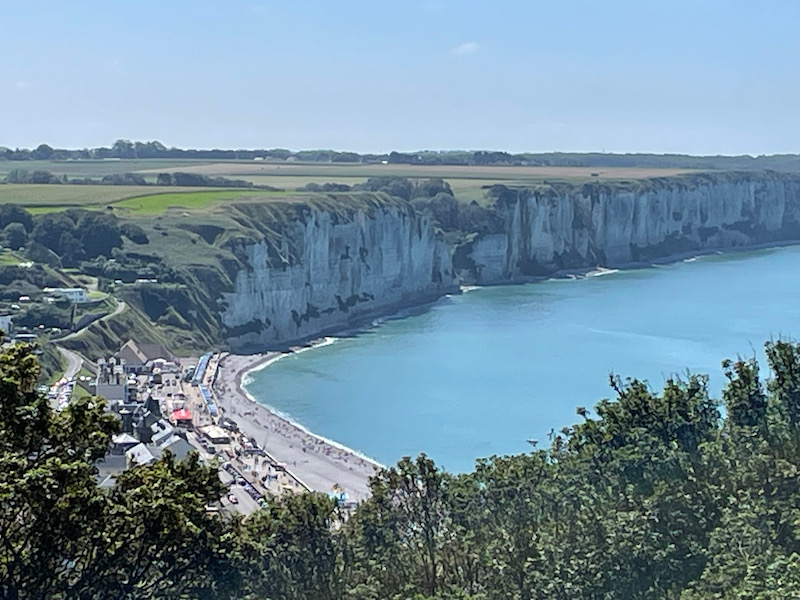
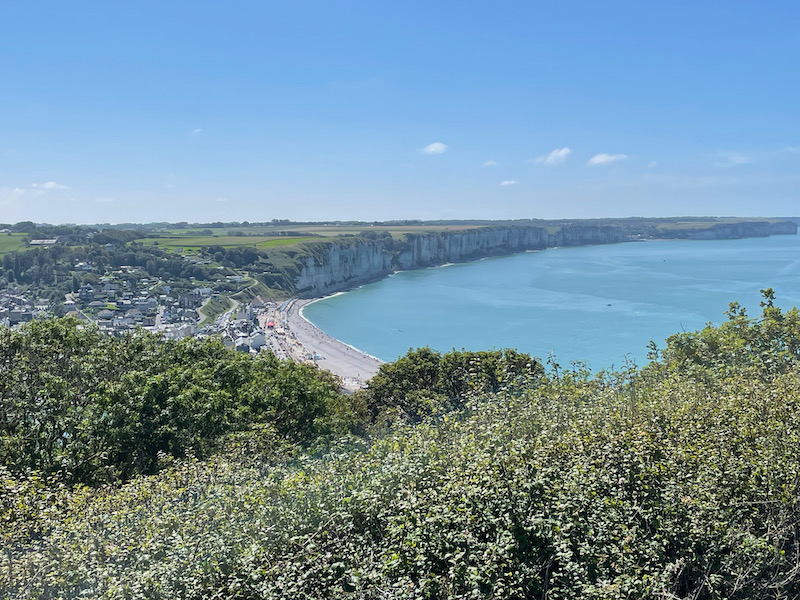
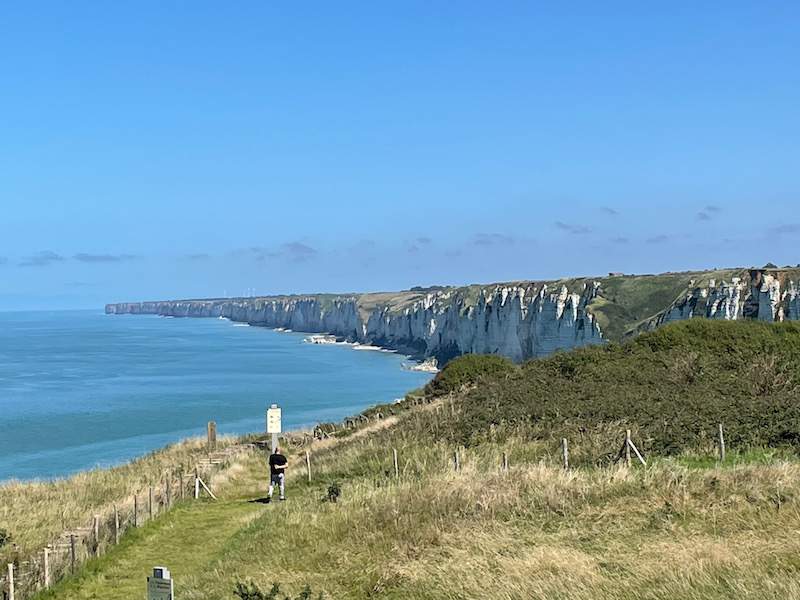
The Chapel of Our Lady of Salvation is up on the Cap Fagnet, and has been a place of pilgrimage since the 13th century. The roof and nave were destroyed during a storm at the end of the 19th century and Wikipedia says it has not been fixed. I can't tell you for sure, since it was not open to the public.
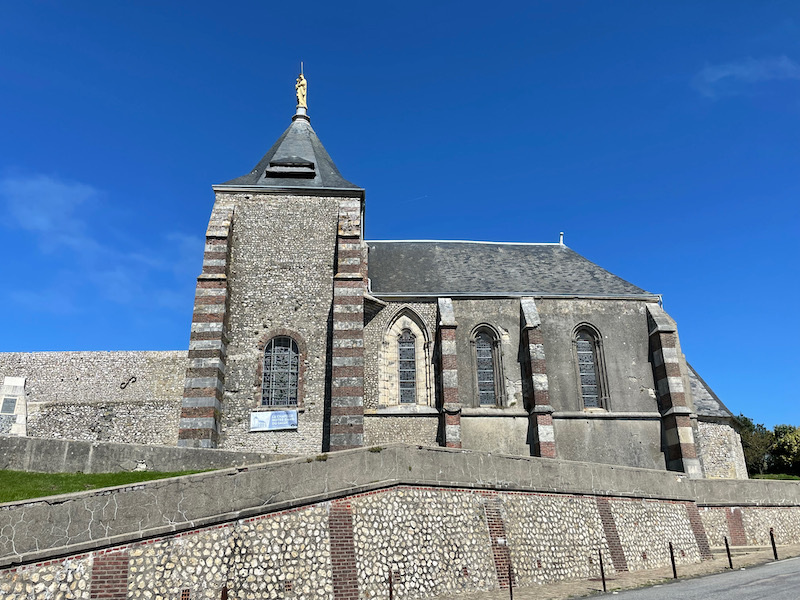
Fécamp suffered the destructive advance of Rommel's 7th Panzer Division and was surrounded in June, 1940. You can imagine that the Cap Fagnet was a perfect place for the German forces to construct a radar station and bunker, which they did in 1942. There are still 2 different blockhouses visible up on the cliff.
